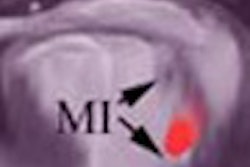PHOENIX - The business of radiology is entirely dependent on patient referrals from other physicians. For imaging center administrators, getting and keeping those referrals for their facilities is crucial for success. In the competitive landscape of declining reimbursement and specialty self-referral, it is imperative that an imaging center offer its patients the best possible service, from scheduling to billing.
"The three most common customer service complaints are: no greeting or salutation; an employee is unfamiliar with services or activities beyond their areas; and a customer can't get a human being on the phone," said Hazel Hacker.
Hacker, business manager of Edison Imaging Associates in Edison, NJ, presented her thoughts on auditing customer service to attendees of the American Healthcare Radiology Administrators (AHRA) Imaging Center Administrator's conference this past weekend.
Surveys, such as patient satisfaction, referring physician satisfaction, employee satisfaction, and billing satisfaction, are all helpful tools for obtaining feedback from clients, Hacker noted. However, getting responses from those surveyed can be problematic: Her group held a random drawing for a prize each quarter from among the survey respondents, which improved the return rate for its surveys.
Although surveys provide a means for obtaining impressions and assessments of a practice, they are no substitute for the patient experience at a facility, Hacker said.
"Try becoming a patient in your own imaging center," she suggested.
Hacker advocates that imaging center administrators test the systems in place that a patient might experience, either themselves or through surrogates such as "secret shoppers," to ensure that the facility is carrying out the best possible service.
For example, she suggested calling the center to schedule an MRI scan. Hacker tests the scheduler by being a very difficult potential patient. This means questioning everything the scheduler requests, while trying to provide as little information as possible, in an effort to see if scheduling protocols are being followed.
After the appointment has been set, Hacker will wait 10 minutes and call back with a group of questions about MRI to test the scheduler's knowledge of the exam process. She then waits and calls back after a 10-minute period with questions on CT compared with MRI. After another 10-minute break, she calls back to cancel the exam, citing the dangerous nature of magnetic fields that she saw on a television exposé.
The final call tests whether a scheduler is able to maintain a gracious and professional attitude toward even the most demanding patient, Hacker said. Other potential audit tools for schedulers are role-playing exercises and random call monitoring by their supervisors.
"If you don't know what's really going on in your center, if you don't know what's being said to patients, then you've got a problem," she said.
Hacker recommends that undercover auditing take place during lunch hours or at shift changes to see how a staff reacts during transition times.
"Excellent customer service is easy when everything is going well and you're fully staffed," she said. "You want to find out how the staff is providing customer service in the difficult moments."
Hacker suggested that imaging center administrators spend time in their patient waiting rooms, not as administrators, but as listeners and observers. She also counseled administrators to go into exam rooms and lie on the tables to ascertain the patient experience of the facility. By taking actions such as these, one administrator found that she could overhear privileged conversation in one room due to its proximity to another area, a problem of which she was previously unaware.
Attention to detail, staff auditing, and viewing the center through a patient's eyes will help ensure that a facility is doing its utmost to develop and deliver a culture of customer satisfaction, Hacker said.
By Jonathan S. Batchelor
AuntMinnie.com staff writer
October 17, 2005
Related Reading
Service blueprinting maps path to excellence, August 26, 2005
Strong customer relationships: Building a competitive advantage, June 6, 2005
Web-based workflow and reporting systems keep imaging on track, March 10, 2005
Impactful marketing in healthcare, May 14, 2004
Copyright © 2005 AuntMinnie.com



















